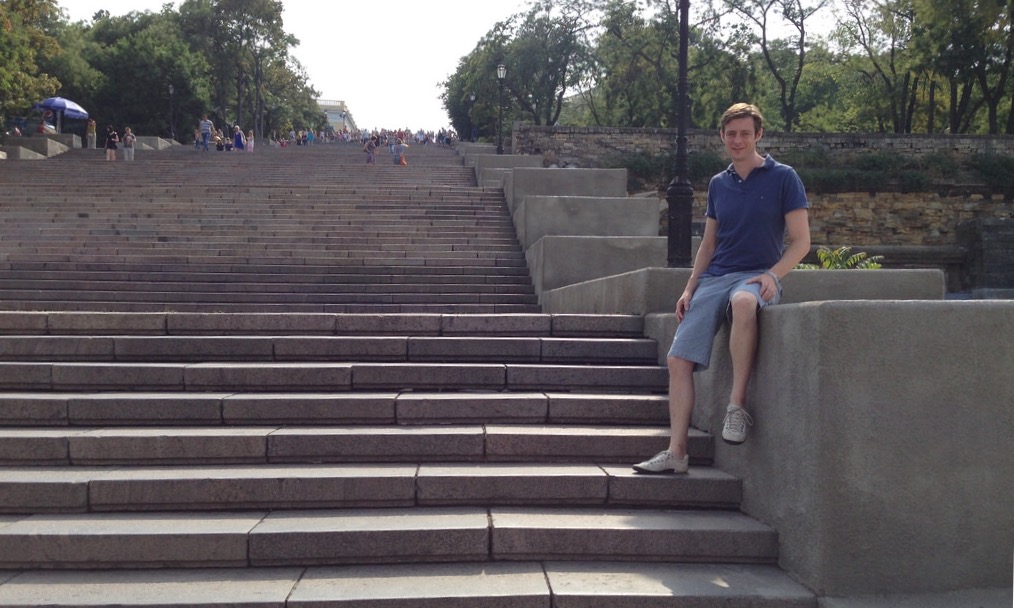
Odessa – Tourist Attractions
GUEST POST
Odessa is a quite young and a unique city. It has absorbed a multicultural mix of people because at the city’s high point of its prosperity, it welcomed Italians, French, Greeks, Russians, Ukrainians and many others whose names are immortalized in its history. Odessa was founded by José de Ribas – Spaniard by birth who grew up in Italy. The main street of the city – Deribasovskaya – was named in his honor.
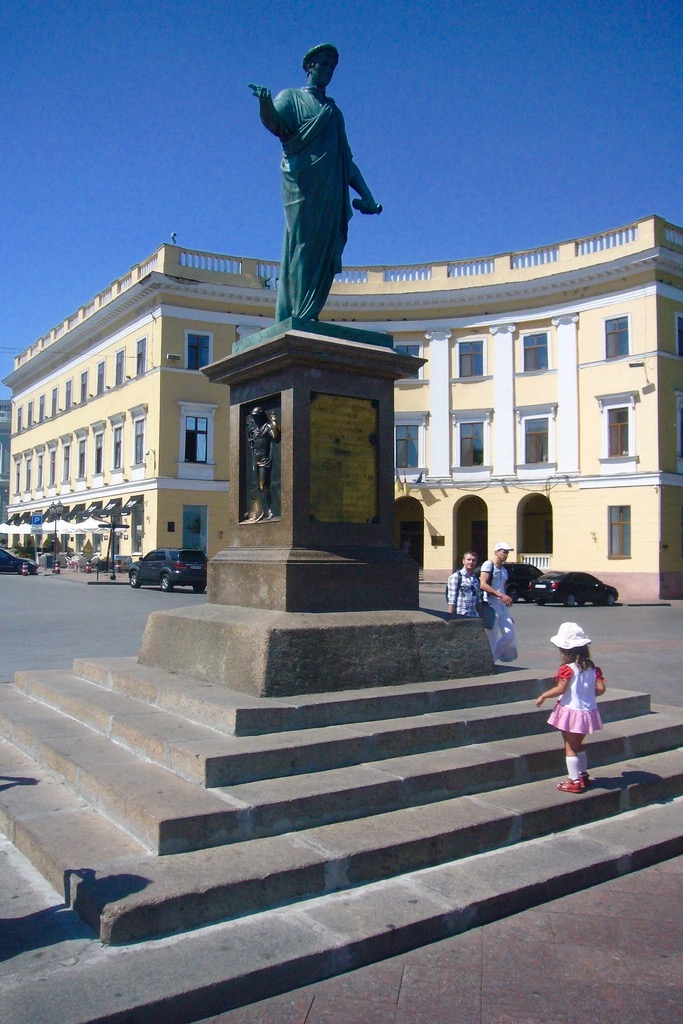
For 220 years the city has endured a lot – a plague, pogroms, revolution, occupation during the First and Second World Wars, and coping with the inherent problems of daily life.
But residents of the city has a wonderful attitude – they go through life with their heads held, no matter what obstacles may be thrown at them.
Local people from Odessa have an excellent sense of humor and hospitality, so they are well received all over the world. You can joke with them but most importantly – always know when to stop because in this city the inhabitants really love their hometown and will protect it.
This was the first monument in Odessa that was erected in the middle of the 19th century by the famous Russian sculptor, Ivan Martos. Duke Armand de Richelieu was Governor-General of New Russia and Bessarabia for 11 years. During these years a commercial court was opened in Odessa and as the city’s population increased, there was a lot of trees planted, the consulates of 7 countries were opened and much more. During the plague of 1812, he personally helped the sick and divided the city into two sections – the infected and healthy. Odessans honor the memory of Richelieu and treat him with great respect.
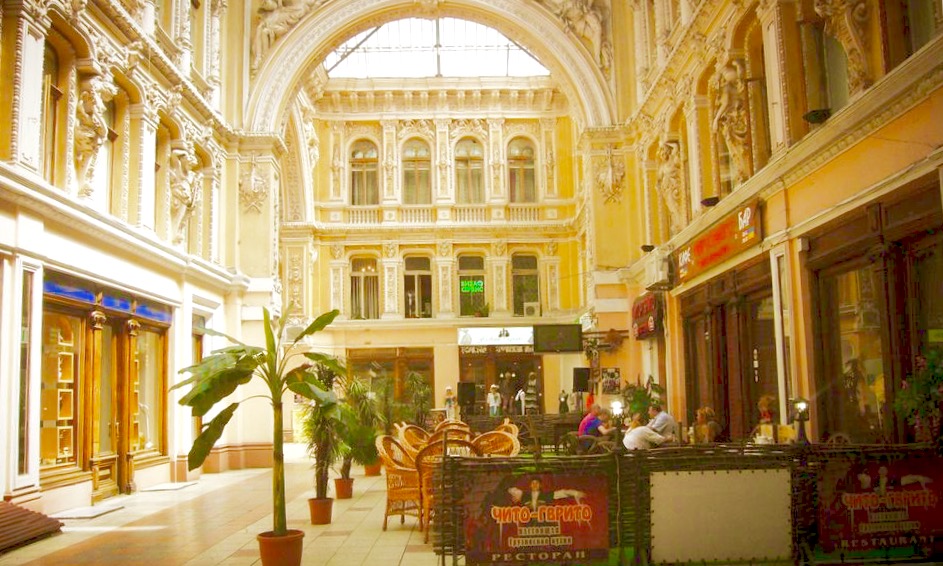
“Passage Hotel” is located in the city center – on Deribasovskaya street. The building was build in the late 19th/early 20th century and the central part of it was conceived as an indoor glass-roofed courtyard. The ground floors have always been occupied by shopping arcade. At the beginning of the last century, there were shops selling glassware, jewelry, gramophones, musical instruments and more. The architect was Leo Vlodek.
Elements of the decor are easy to recognize as the ancient gods of trade and good luck – Mercury and Fortune. If you stand a bit back towards the city and look at the garden on the roof of the hotel, you will notice an interesting sculpture symbolizing the “new time” – a locomotive and sitting on it, the god Mercury.
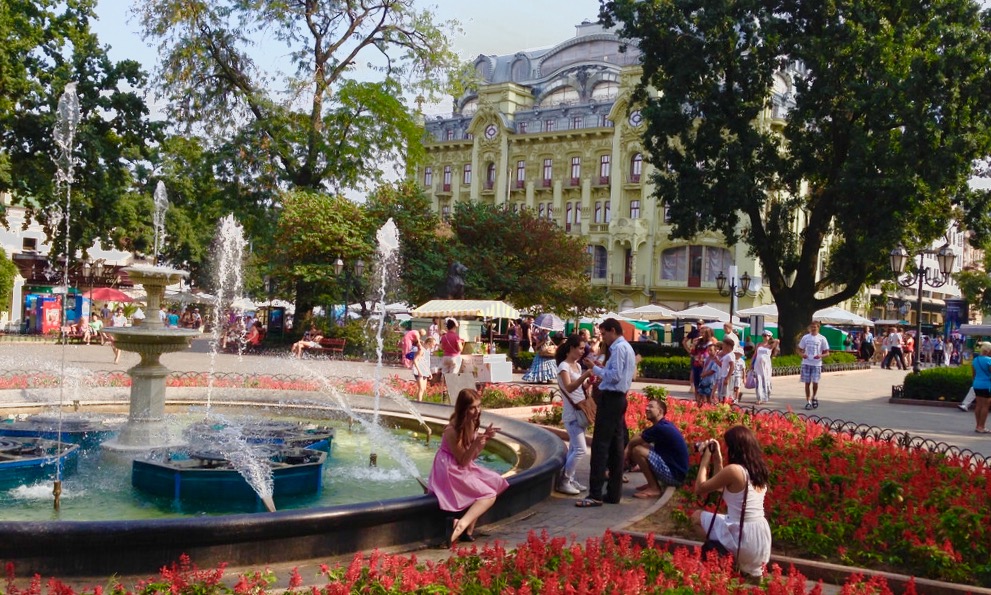
Near the hotel Passage is the city garden. This is was first small park in Odessa. It was presented to the city in perpetuity by the brother of José de Ribas – Felix. Today in the garden sits a musical rotunda where on the weekends an orchestra often plays. In the garden there are four small monuments: “The Twelve Chairs” (from the book “The Twelve Chairs” by Ilf and Petrov), “Leonid Cliffs” (Odessa’s great singer and musician, the first to play jazz in the city), “Sergei Utochkin” (famous athlete, pilot) and the “Tree of love” (with the word “love” in 65 languages).
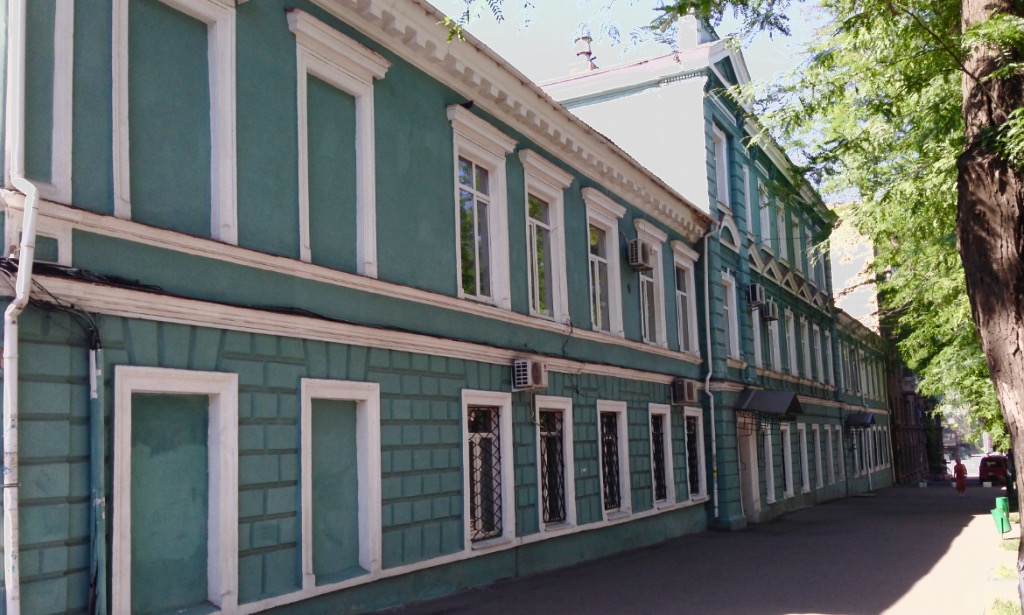
In the first half of the 19th century, the Richelieu Lyceum was opened on Deribasovskaya Street. It got its name in honor of the Governor-General of Odessa, the Frenchman, Armand de Richelieu. The institution was attended by such personalities as Tsar Nicholas I, the Polish poet Adam Mickiewicz, Russian writer Alexander Pushkin, the surgeon Nikolai Pirogov among others. For a while the famous Russian scientist taught there. It was the first higher education institution in the city, which in 1865 was transformed into the Novorossiysk Imperial University (now the Odessa State University Mechnikov). Today in the old complex of the Richelieu Lyceum are residential apartments, offices, restaurants and hotels.
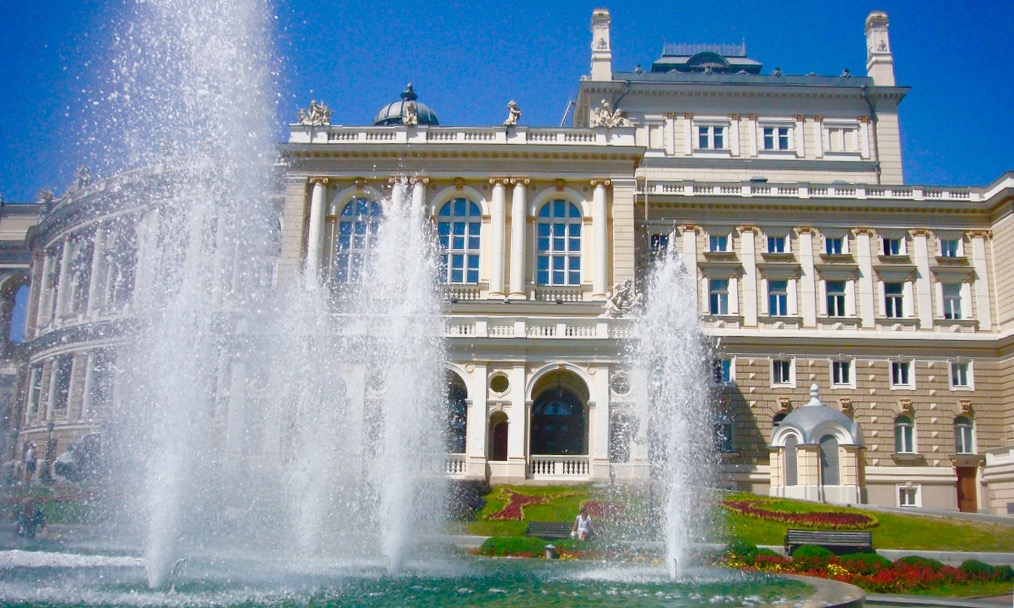
According to the magazine «Forbes» Odessa Opera House, is one of the most beautiful sights in the eastern Europe. It was designed by two Austrian architects – Fellner and Helmer in 1887. At the same time a new power plant was built, which was created specifically to supply the opera building. The building is in the Viennese baroque style. Placed on the facade are busts of outstanding contributors to Russian literature and music – Nikolai Gogol, Mikhail Glinka, Alexander Griboyedov and Alexander Pushkin.
The interior of the theatre is decorated in the Rococo style. Within its walls have performed and worked many outstanding singers, dancers and actors, as well as, great composers, such as Tchaikovsky, Rimsky-Korsakov. The first opera was opened in 1809 by a contemporary of the great Russian poet Alexander Pushkin. Unfortunately, the building burned down in 1873 but ten years later, construction began of the theater as we know it now. These days, every tourist who arrives in Odessa, is obliged to visit this legendary place.
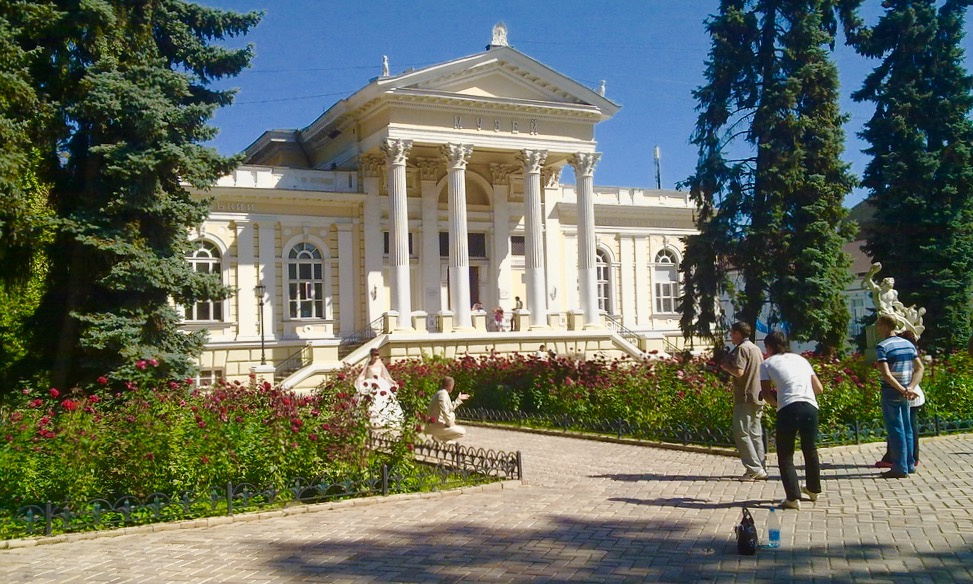
The building of the Archaeological Museum in Odessa was designed by the architect Torricelli. After some time, it was rebuilt under the leadership of architect F. Gonsiorovskiy. It housed a museum of antiquities and a library, which was eventually was moved to another location. The museum was built in the antiquities style, with a portico and columns. Winged sphinxes on the roof symbolize time and wisdom.
The museum contains exhibits of ancient history of the northern Black Sea and a collection of monuments of Ancient Egypt, Ancient Greece and Rome. In total there are more than 160,000 exhibits. In front of the museum lies a sculpture called “Laocoön”. It symbolizes the myth of the priest of Apollo, Laocoön, who wanted to save his sons from the punishment of the gods. This is a copy of the famous sculpture, which who can find in the Vatican.
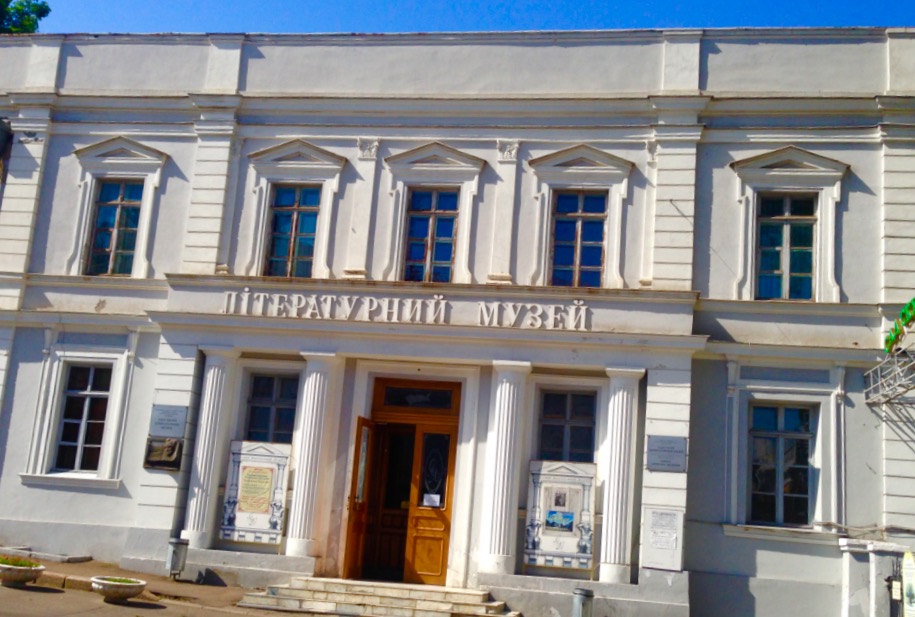
Modest on the outside but rich on the inside (designed in the classical, baroque and imperial styles), the Literary Museum contains the work of more than three hundred writers’ names associated with Odessa. Among them are such figures as Yuri Olesha, Isaac Babel, Valentin Kataev, Roots Chukovsky Paustovsky, Ilya Ilf, Evgeny Petrov, Vera Inber, Nikolai Gogol, Lesia Ukrainka, Konstantin Simonov, and many others.
The museum (architect L. Otton) is located in a former palace of Prince Gagarin. Especially beautiful is the Golden Hall. According to legend this is where the famous Hungarian composer and pianist Franz Liszt played. The museum has also garden sculptures. Every year, on April 1 Odessites come here for the grand opening of a new sculpture.
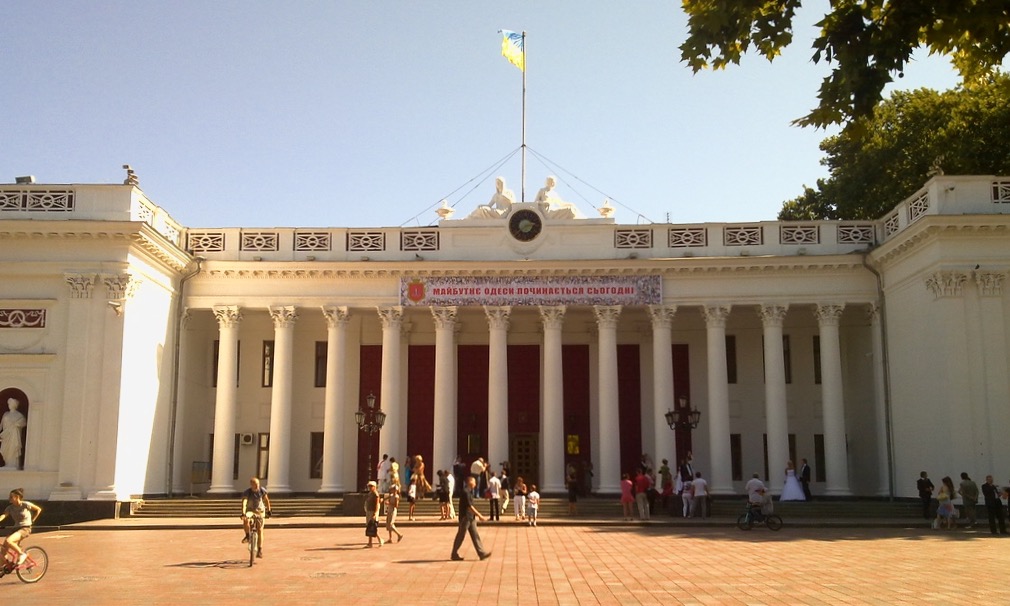
The building was built in the middle of the 19th century by the architect F. Boffo. This is the first merchant market in the city and the second in the Russian Empire. Initially, it contained a semi-circular courtyard with columns where the trading took place. In the second half of the 19th century, the building was rebuilt by architect F. Morandi.
The sculpture next to the clock symbolizes the Day and Night – an eternity of time. In large arched windows are located Ceres and Mercury – the gods of fertility and trade. The gun next to the stock exchange symbolizes the victory over the invading Anglo-French squadron during the Crimean War of 1854. It is facing towards the sea and reminds her enemies, that the city is able to adequately defend herself.
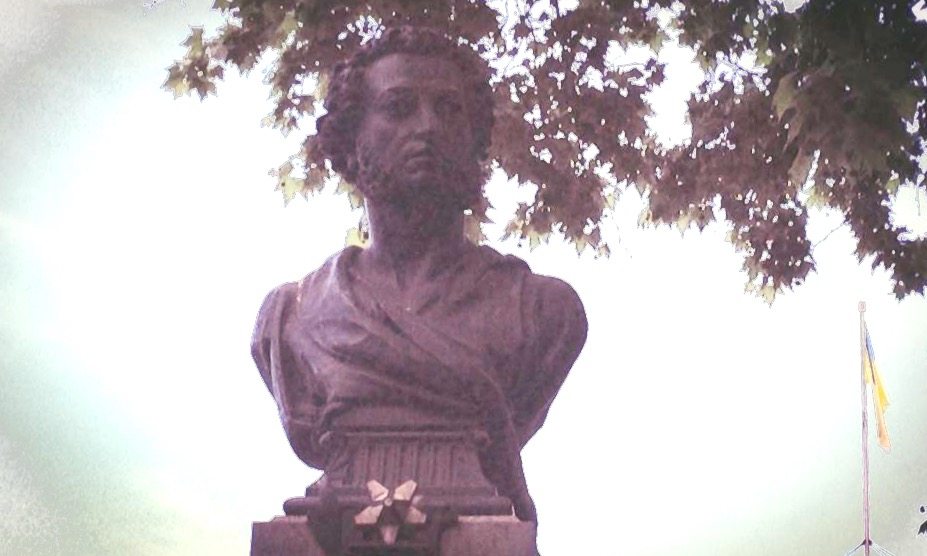
The great Russian poet lived in the city in 1823-1824. He served as a secretary-clerk in the office of the Governor-General Mikhail Vorontsov. Pushkin glorified Odessa in one part of his novel “Eugene Onegin”. “I lived in dusty Odessa ..” – he described his impression of being in the city. The monument was built in 1889 with funds raised by the city’s residents. A bronze fountain in the form of dolphins adorns the sides of the monument.
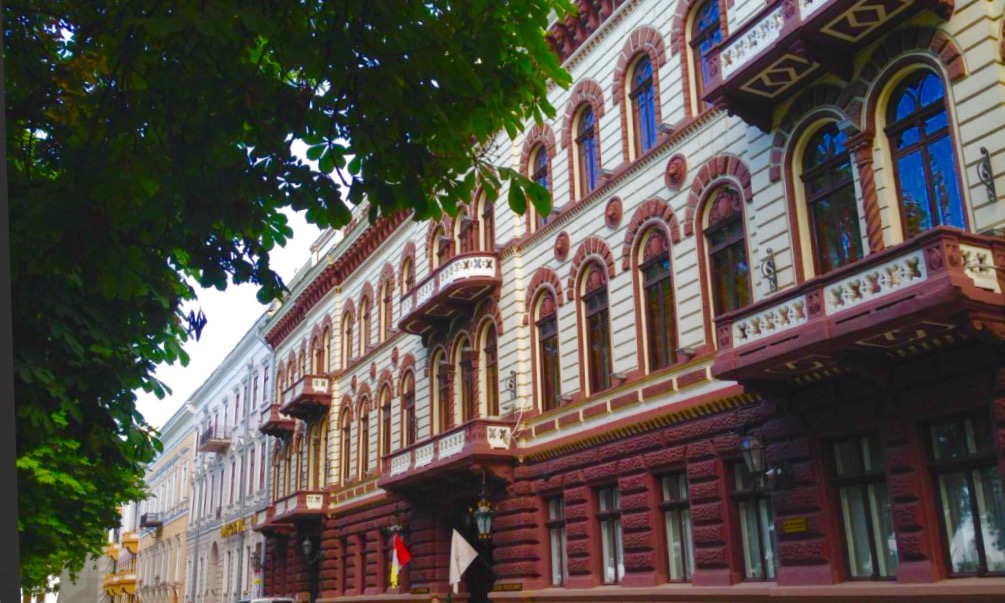
This hotel is named “London” (Architect – Yu Dimitrenko) but the facade resembles several Florentine palazzo of the Renaissance. The hotel is notable for the fact that over the years it hosted many famous people: the dancer Isadora Duncan, actor Alexander Vertinsky, artist Ivan Aivazovsky, writers Paustovsky, Vladimir Mayakovsky, Anton Chekhov and many others. Next to each number, a label is attached with the names of celebrities who stayed there. №38 is famous as the filmmaker Sergei Eisenstein, who made the film “Battleship Potemkin”, lived there.

Conor Clyne, creator of the Tsar Experience, at the famous Potemkin Stairs in Odessa
The staircase has 192 steps and is the main entrance to the city from the sea. Back in the 20th century, in his film “Battleship Potemkin”, the great director Sergei Eisenstein immortalized the stairs. The famous scene with a carriage that slides down the stairs forever is remembered millions of viewers.
If you look at this building from the bottom, you only see the landings. If you view from the top, only the steps are visible. The staircase was also built with its base much wider than the top.
At the time, the stairs was admired by such famous artists as Alexander Green, Jules Verne, Mark Twain, Alexander Ostrovsky. It is believed that this building was given a birthday Elizabeth Vorontsova – the wife of Prince Mikhail Vorontsov, who for 21 years was the Governor-General of New Russia (Odessa was part of the Novorossiysk Territory) and Bessarabia.
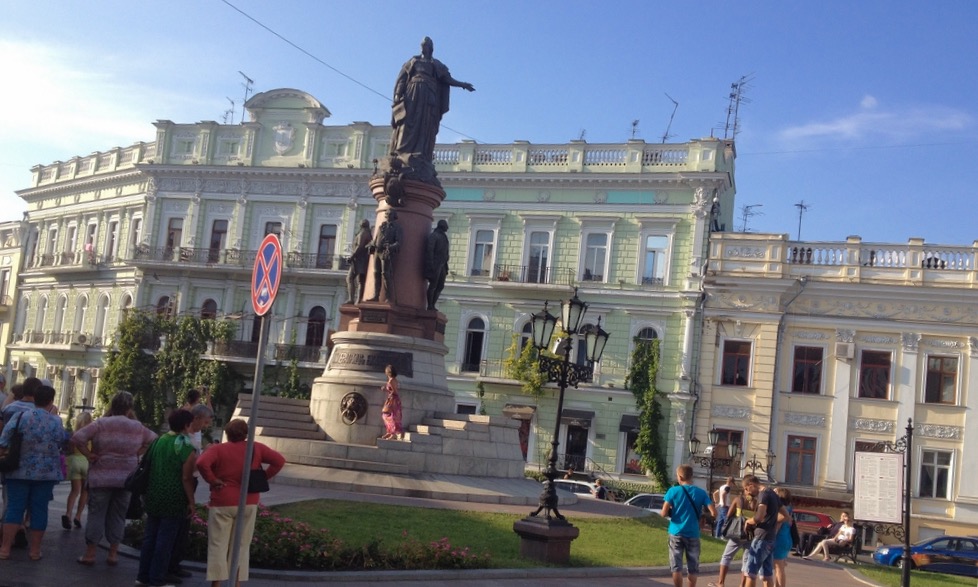
The monument to Catherine the Great and her companions was established in 2007 and is a replica of the one demolished in the 1920s. Below Catherine II sit José de Ribas, Franz de Volan, Grigory Potemkin-Tauride and Platon Zubov – individuals who participated in the liberation of the village of Hadzhibey (in 1794 renamed ‘Odessa’) from the Turks, as well as contributing to the construction and prosperity of the city.
At the foot of the Empress is a fallen Turkish flag – a sign of victory over the Turks, who occupied the territory of the future Odessa. In the hands of the Empress’s edict: “We take command of the port and the city.”.
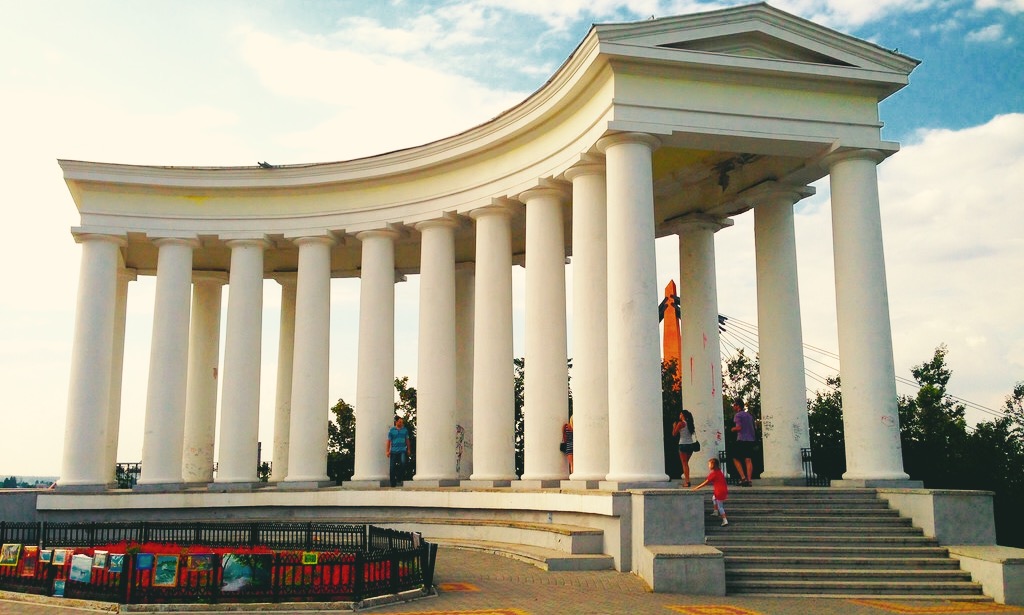
This palace belonged to the Governor-General Mikhail Vorontsov (architect – F. Boffo). The building is in the imperial style, and served as his residence, where met guests and arranged balls who were particularly attracted the attention by the interior design. The once-luxurious marble fireplace ceremonial hall, as well as all, the doors in the palace were brought from St. Petersburg’s Mikhailovsky Palace.
The white ceiling of the hall is decorated with an exact copy of the pattern of the fan of the governor’s wife – Elizabeth Vorontsova. A Turkish room for overseas visitors is full of gorgeous colors, patterns and inscriptions. The remaining rooms are also distinguished by their elegance and originality. The front of the palace is a colonnade, which extends out overlooking the port.
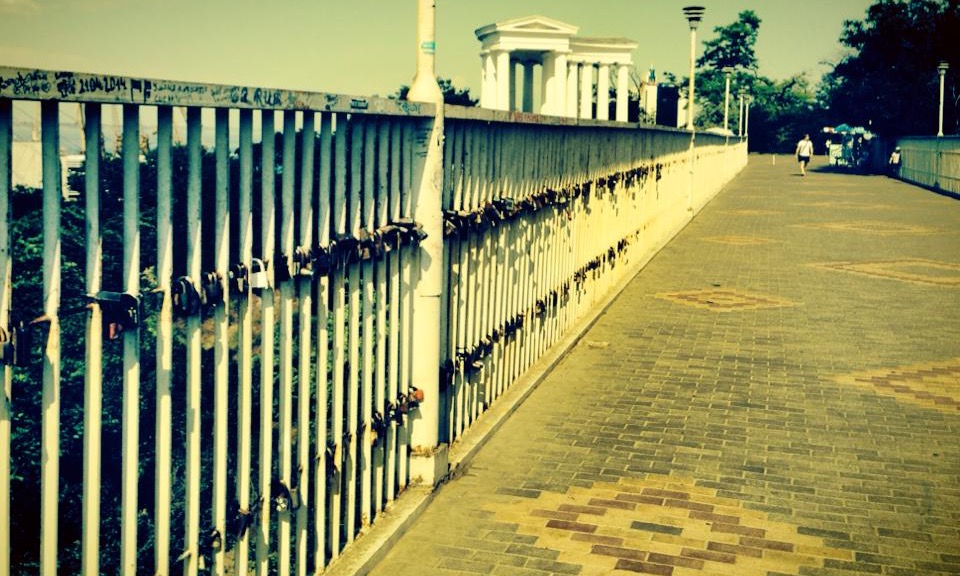
The bridge was erected in 1969 by the architect A. Vladimir. According to legend, the origin of Teschin bridge was because the regional leader of the Communist Party wanted to reach his mother-in-law who lived in the Gogol Street easier and to get there by another bridge took a lot of time so he had the Teschin bridge constructed to quicken his commute. There is also another legend that when the Teschin bridge swings in a strong wind “it is stirred up, like the tongue of a mother-in-law.”
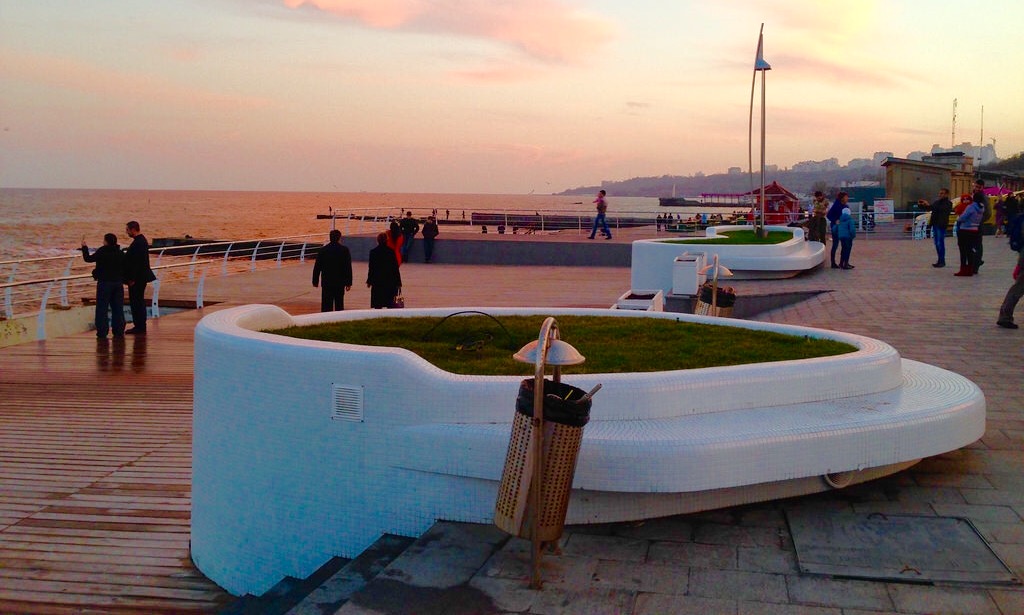
In Odessa, you can come at any time of year because you can always find something to do. You can visit the museums, galleries and sightsee. The only thing you need to know is the fact that in winter there is slush so often need to come with good, waterproof shoes and in the summer – a bottle of water and a hat for protection from the sun. But be careful of the taxi prices – taxi drivers in Odessa are very fond of overcharging.
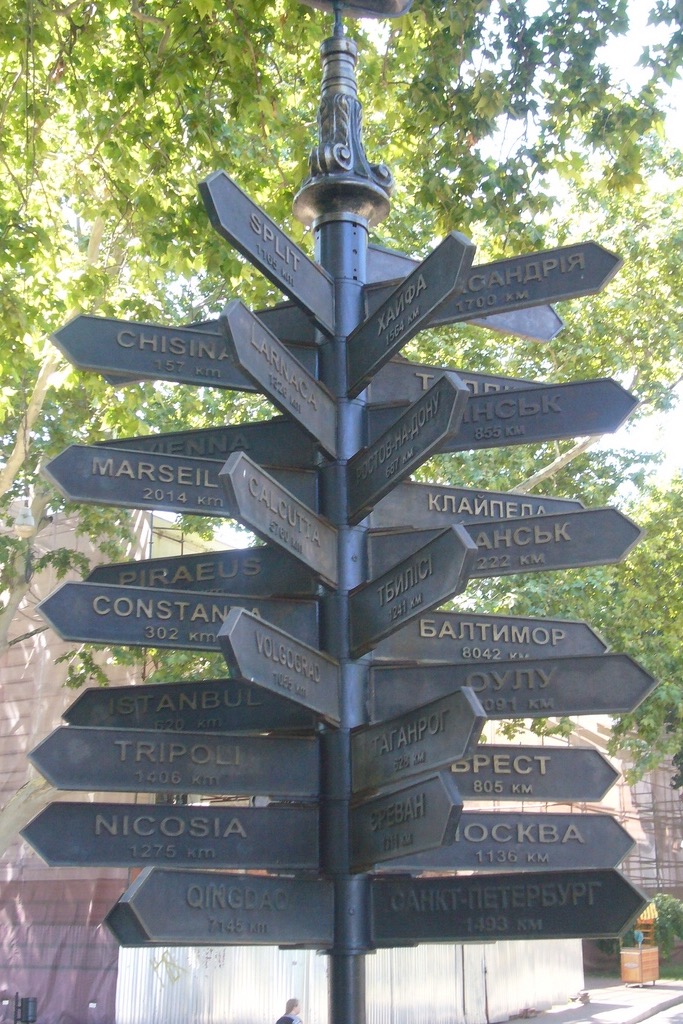
In general, the city center you can move around by taxi for 25-30-35 UAH. If you get to the center of the residential area, on average it will cost you 35-60 UAH (depending on the number of stops and the route). During the holidays rates rise.
If you are traveling, be sure to include Odessa in your itinerary because it is very beautiful and unusual. Coming here, you will definitely feel the extraordinary energy of this place. There are a lot of street musicians and talented people. There often laugh and smile. There are a huge number of restaurants and cafes catering to all tastes. It would be really nice if before the visit here you watched a few movies about the city, or read a book. In this case, it will be easier to navigate your way through the city. Odessa is always happy when guests arrive!

Guest Post Author – Anna
“I hope this short story about the sights will help you understand what is Odessa. I was born, grew up and chose my own path here and thus, feel like a patriot of his city. I hope that you too will join the legion of Odessa’s fans.”
Спасибо Аня за помощь со статьей! 🙂

FREE Video Course:
5Biggest Dating Mistakes made by Western men!
SUCCESS!